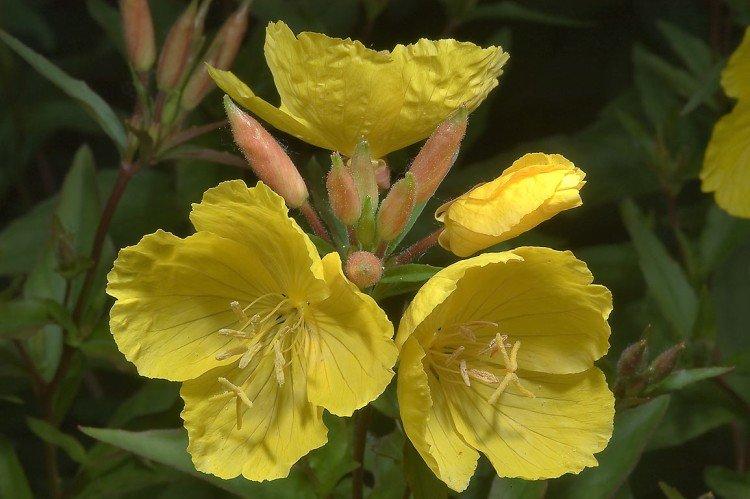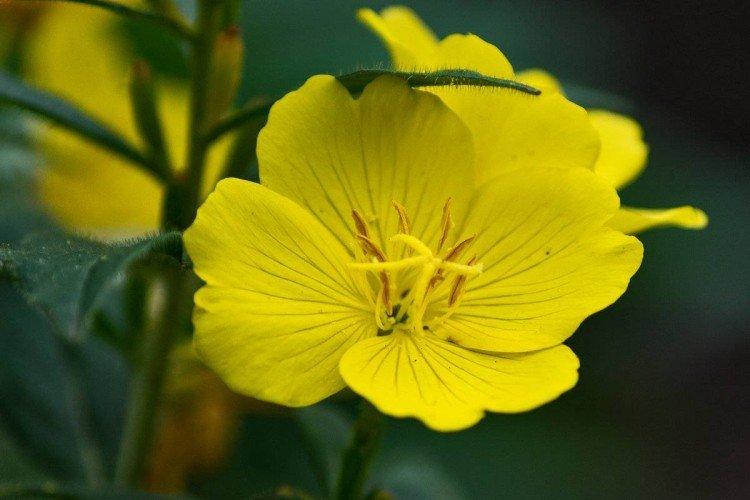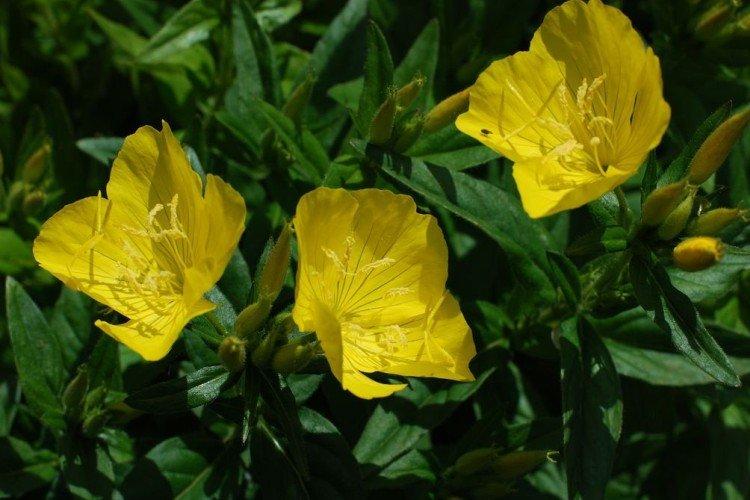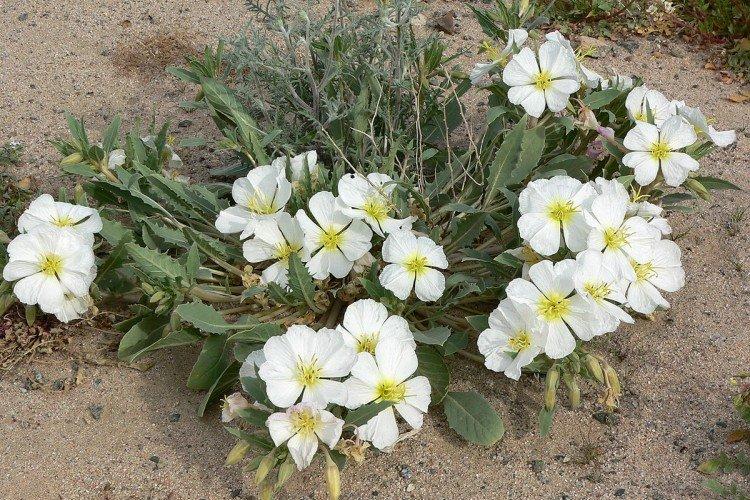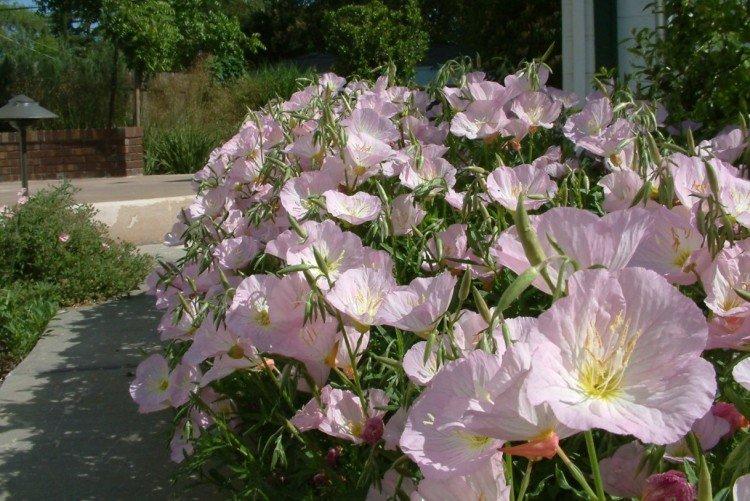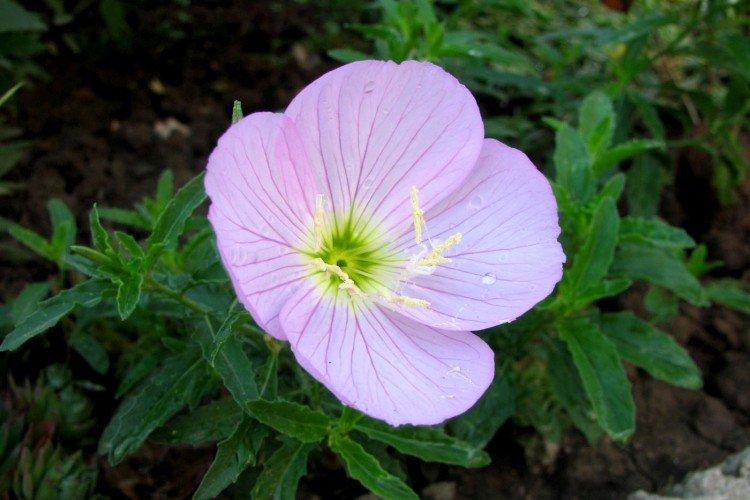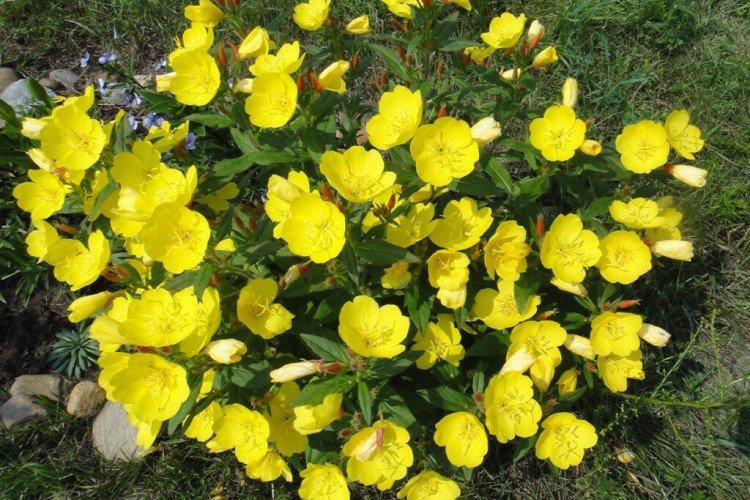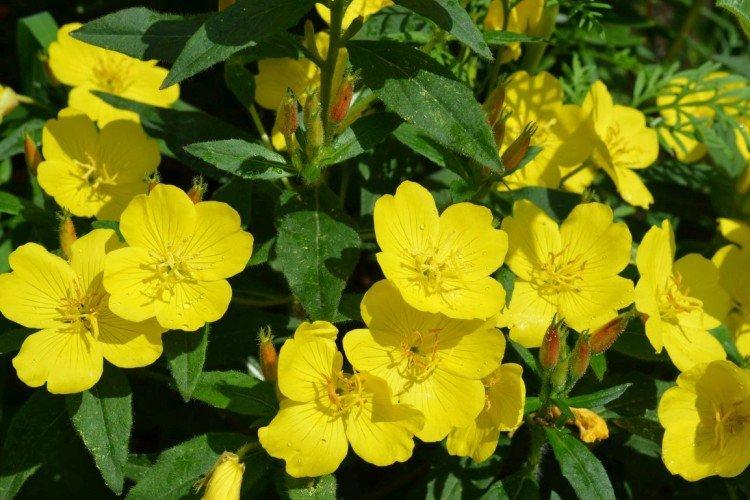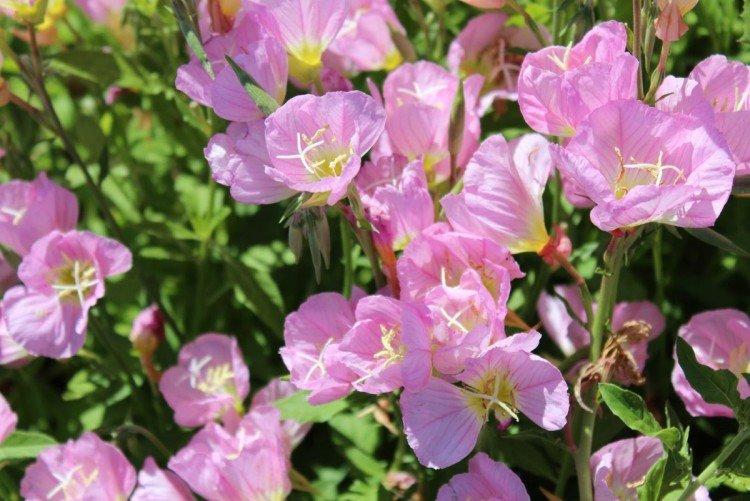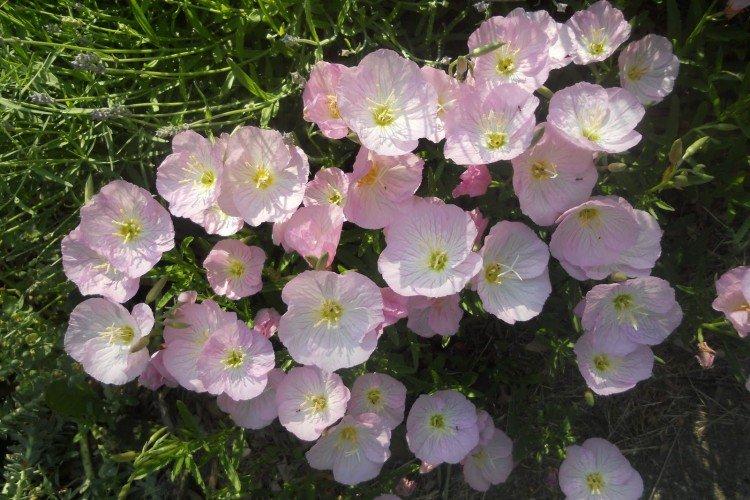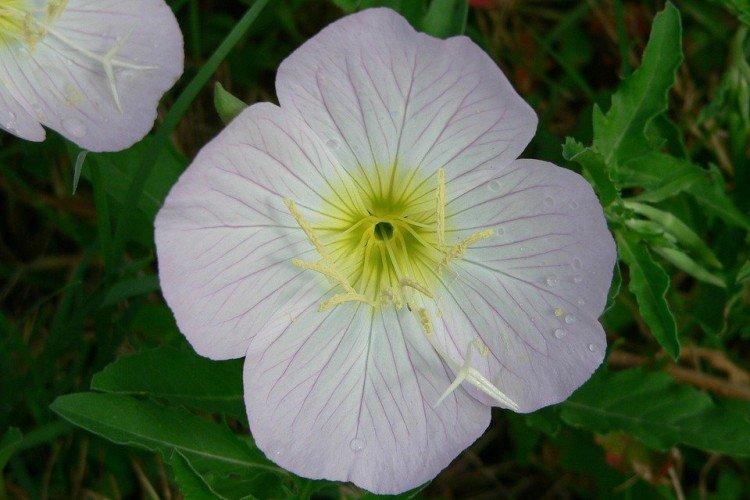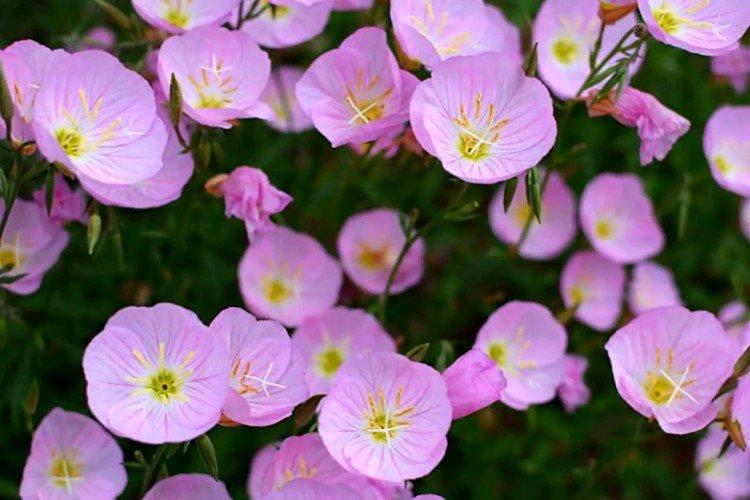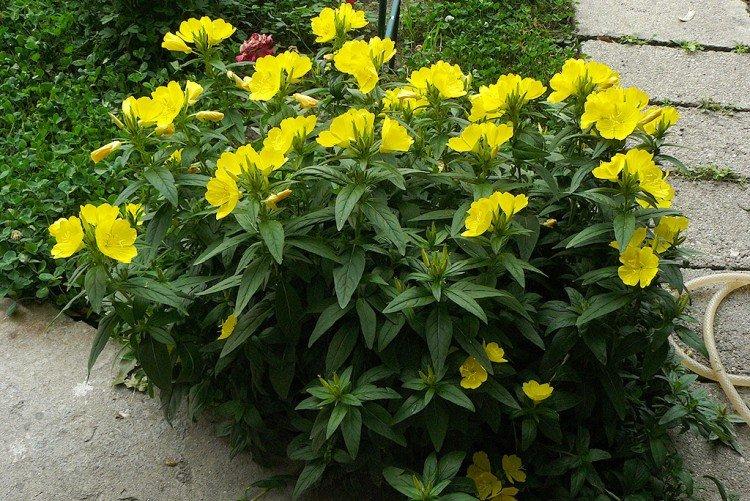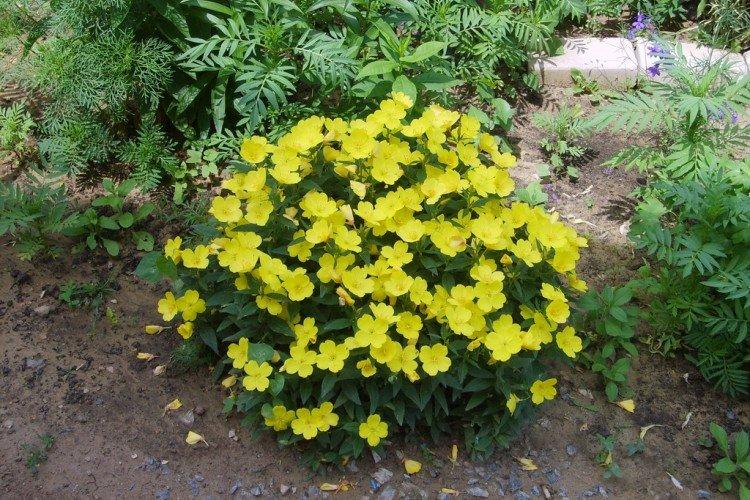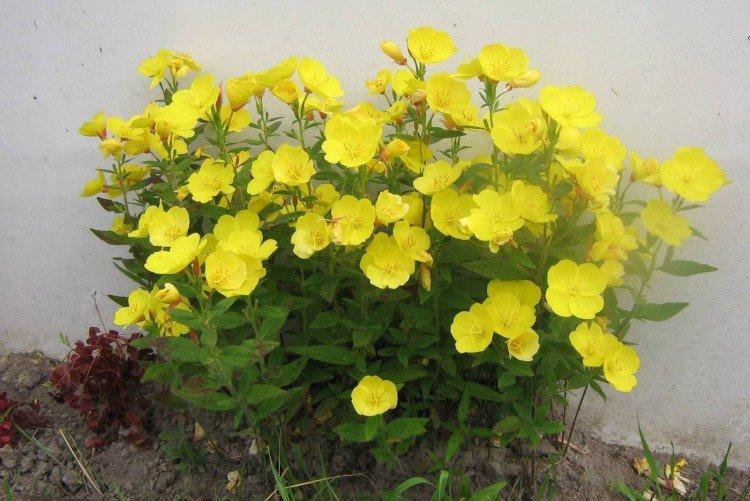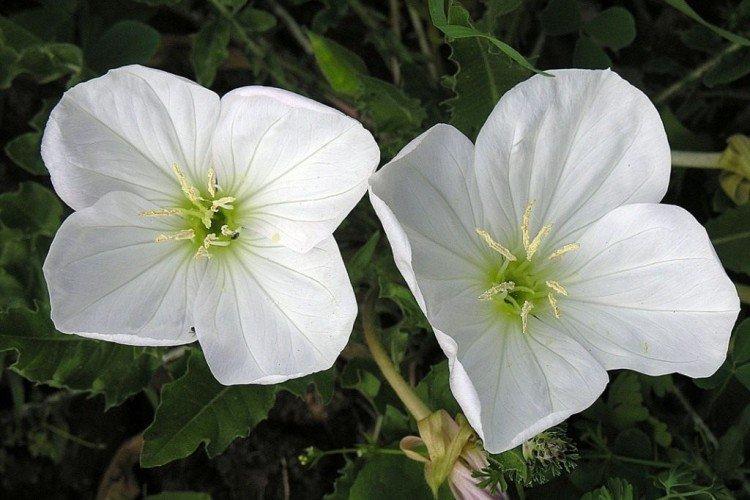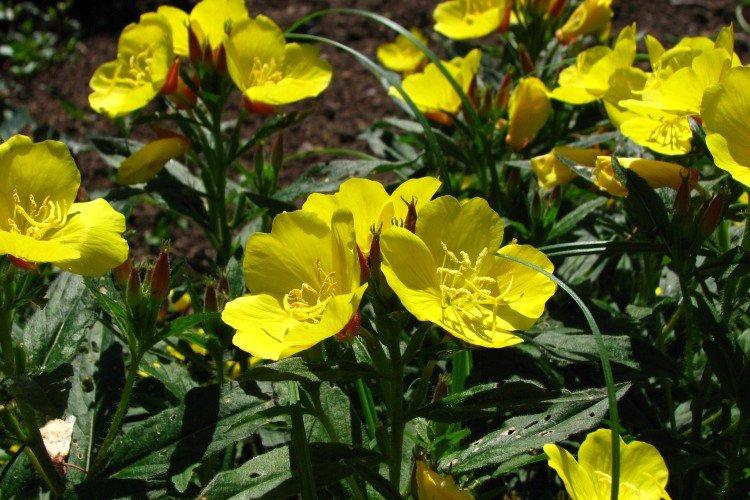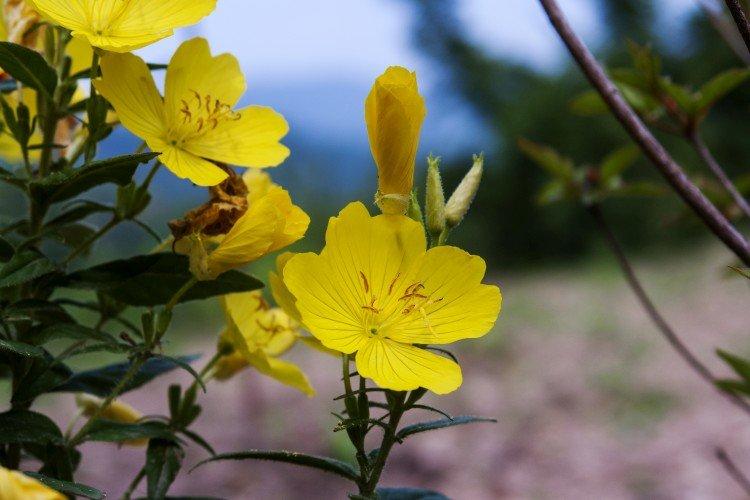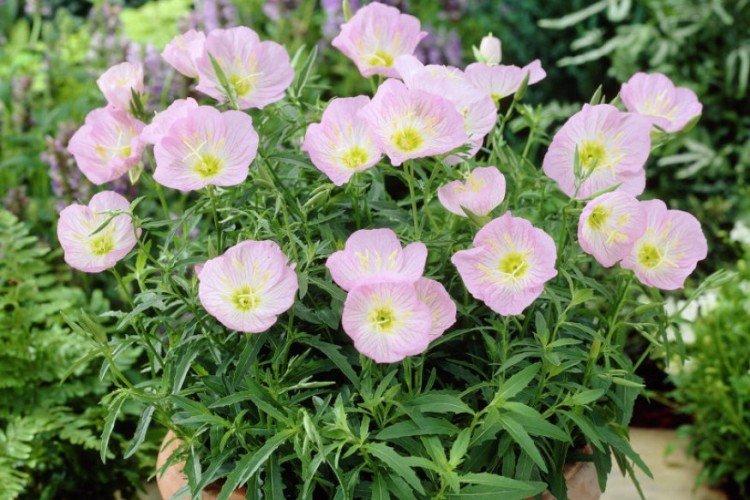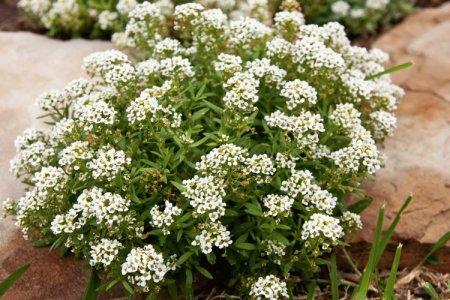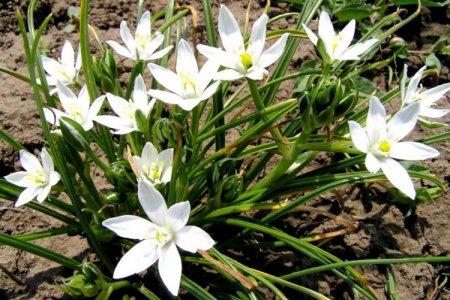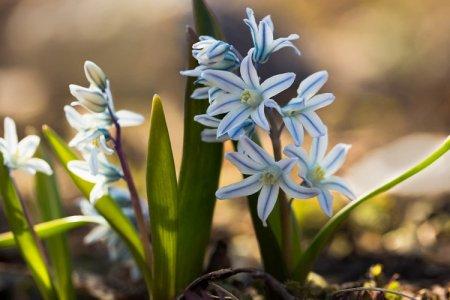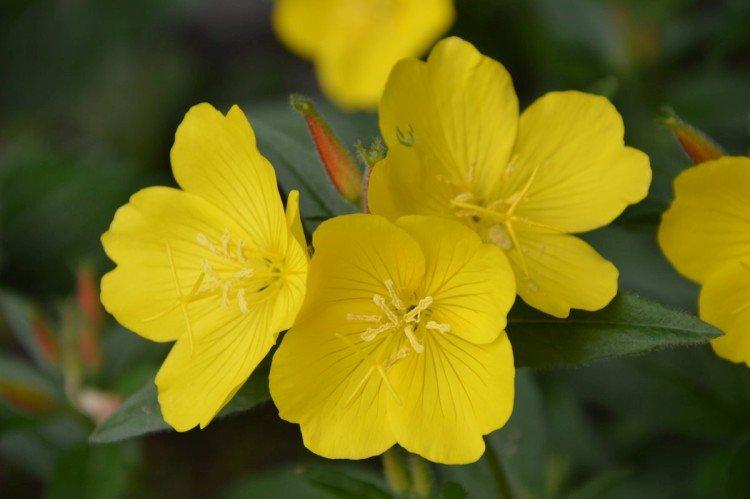
Enotera has long become a favorite of gardeners in our latitudes due to its fantastic unpretentiousness, bright flowering and persistent aroma. It grows quickly, has large flowers and dozens of varieties of different colors - sheer advantages!
general information
Evening primrose has many different names - onager, evening rose, primrose. The genus is very large and extensive, represented by herbaceous and artisanal forms. In nature, evening primrose is common in Europe and America.
The height of the rhizome perennial ranges from 30 to 120 cm. Depending on the variety, the diameter of the flowers reaches 8 cm. Leaves can be absolutely any - simple, lobed or dissected.
Most evening primrose species bloom in the evening and bloom until noon. After that, one-day buds die off, and new ones come to replace them. Flowering lasts in waves from early summer to September.
A valuable cosmetic oil is produced from evening primrose seeds. Its infusion is widely used in traditional medicine. And in ancient times there was a myth that if a wild animal sniffs a wine-drenched evening primrose, it will be easier to tame.
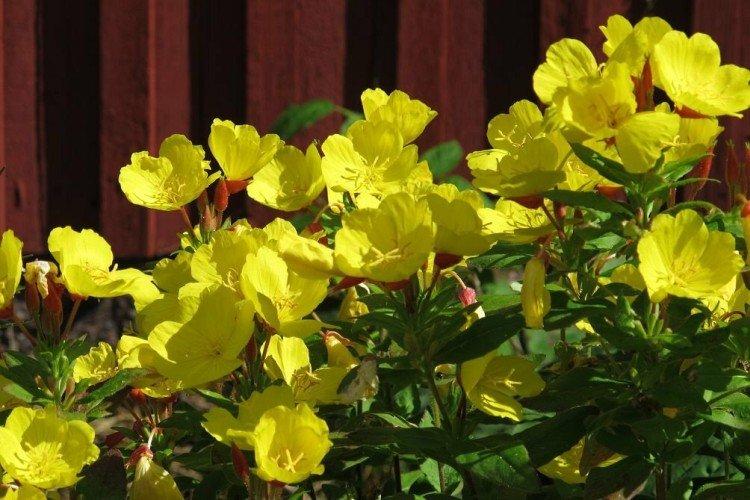
Evening primrose species
There are many decorative varieties in different shades, but they can all be divided into large categories. This is exactly what we did!
Large-flowered evening primrose
The most popular decorative type with bright and large buds. This is a tall variety with high shoots up to 2 m. Most often varieties of yellow shades belong here.
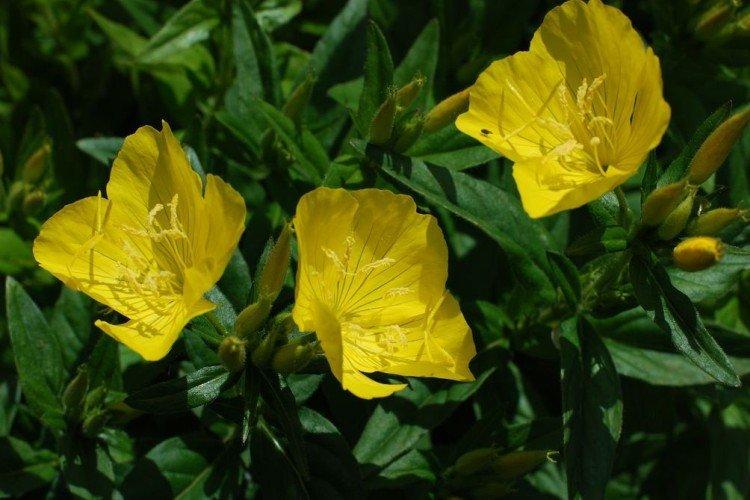
Stemless evening primrose
Compact herbaceous perennial with leafy rosettes and large white flowers. Stemless evening primrose combines well with other ground cover plants.
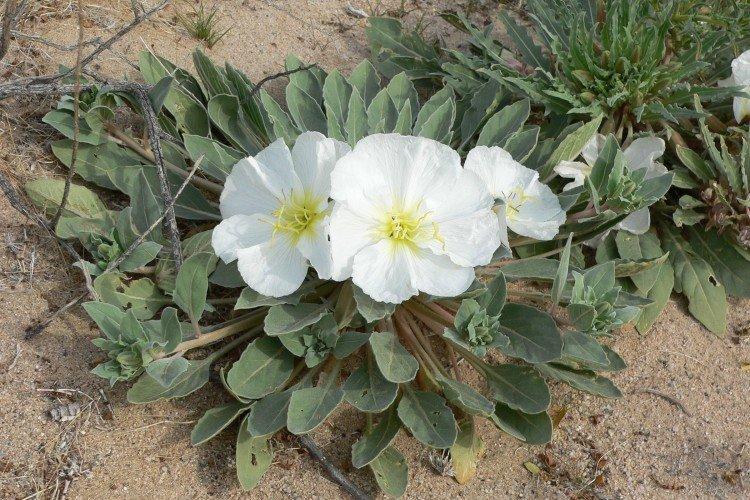
Fragrant evening primrose
It has two distinct features - it blooms only during the day and it has an even more intense aroma. This is a good species for planting in partial shade or even in a very shady area.
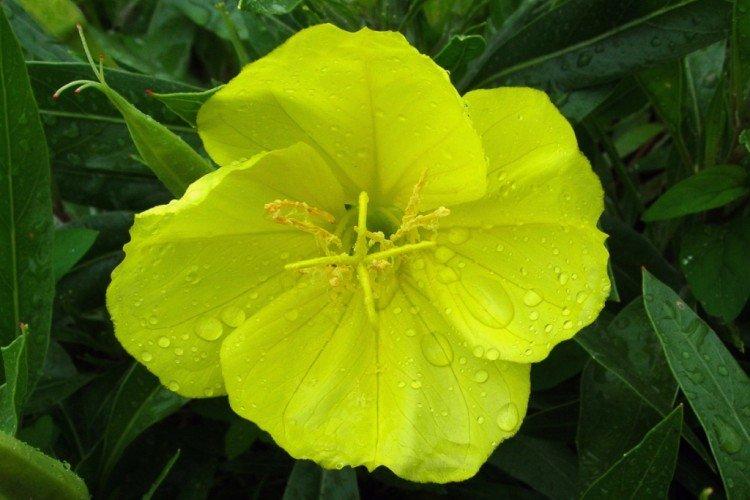
Shrub evening primrose
A large sprawling bush grows rapidly and captures space. Powerful and strong root system easily adapts to adverse conditions and produces many shoots.
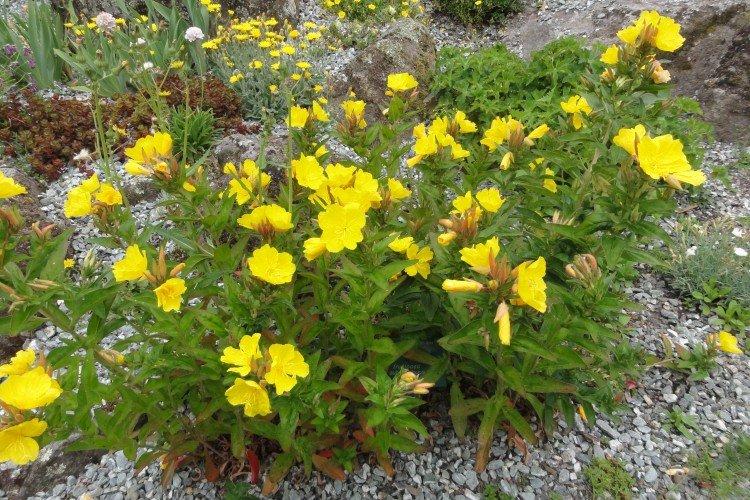
Beautiful evening primrose
A medium-sized branched dwarf shrub stretches up to 40 cm. The beautiful evening primrose has long thin leaves and white-pink cupped flowers in loose inflorescences.
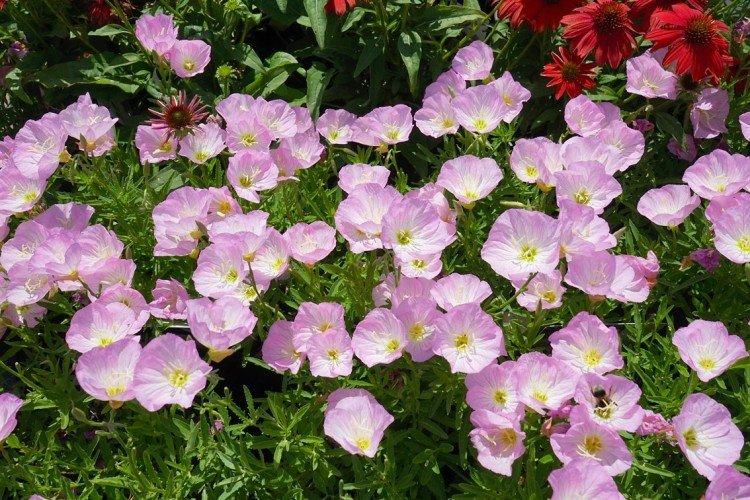
Missouri Evening Primrose
A compact decorative look that can even be called a dwarf. The height of the shoots rarely exceeds 12 cm, so this flower is good for decorating flower beds and lawns. Missouri evening primrose blooms all summer.
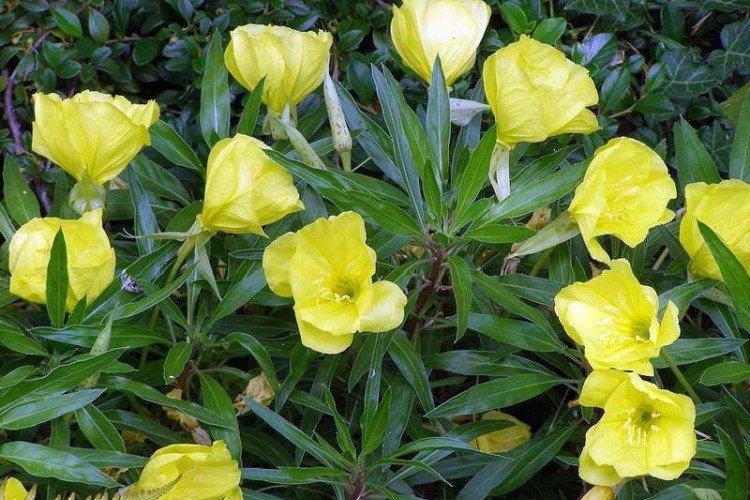
Evening primrose care
Many rightly call evening primrose the second queen of the garden after the rose. But, unlike the rose, evening primrose is also completely picky. It will suit even beginners!
Temperature and lighting
Enotera belongs to shade-loving plants and continues to bloom magnificently even under the crowns of trees. But even in sunny areas, it develops no worse, because it is not at all afraid of the heat.
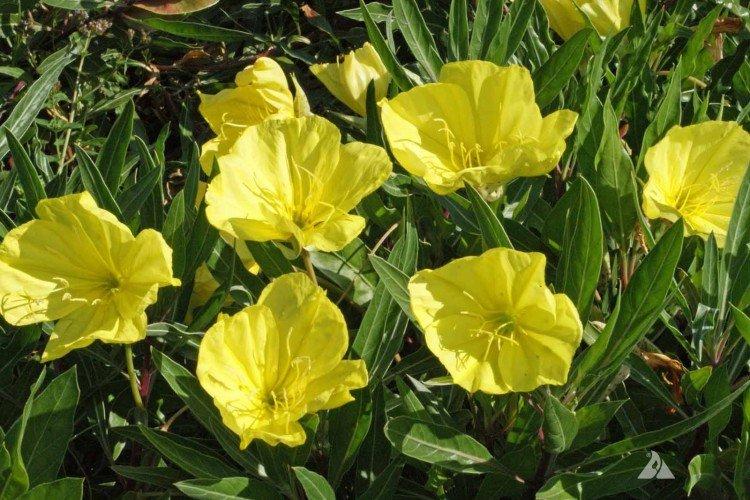
Watering
Almost the only thing that evening primrose does not tolerate is high humidity. She tolerates drought much better, so it is always better to underfill than overflow. In the evening primrose season, literally 3-4 abundant watering is enough.
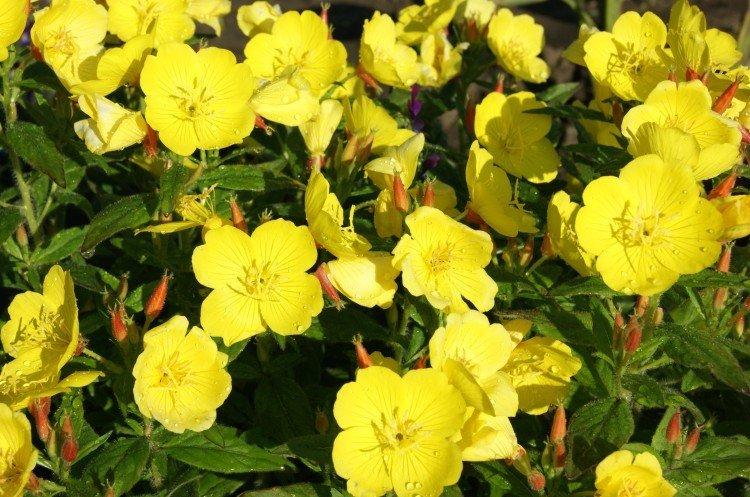
The soil
The soil can be any, but it must be loose, so we advise you to add a little sand as needed. Neutral soil, dug up with humus before planting, is better suited.
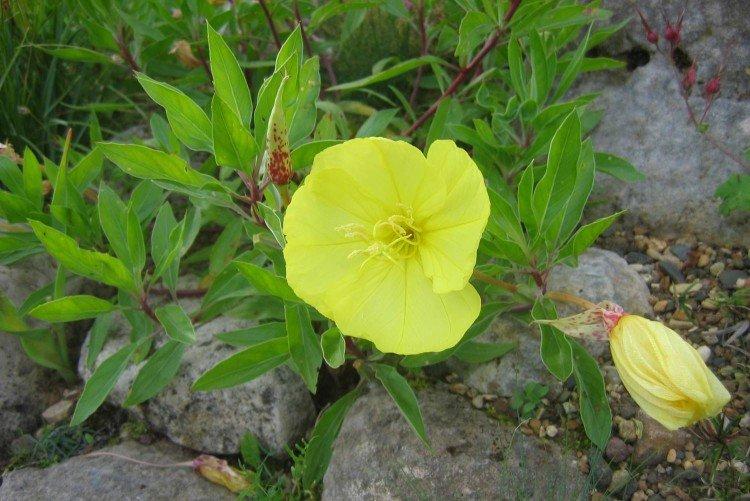
Fertilizers and feeding
If the soil is already fertile, fertilization is not necessary. But if you really want to, you can make complex fertilizing 1-2 times per season. Use preparations with potassium and phosphorus to stimulate flowering.
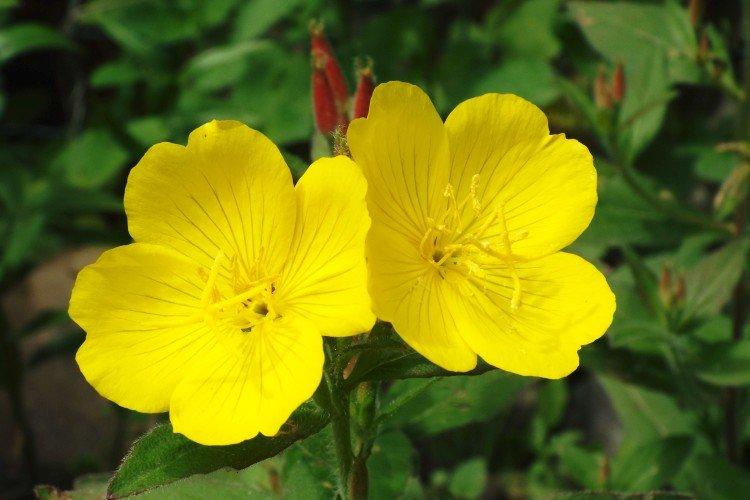
Rejuvenation
Perennial evening primrose loses its decorative effect over time. Therefore, every 2 years the bush needs to be rejuvenated by dividing the rhizome. At the same time, the plant can be propagated.
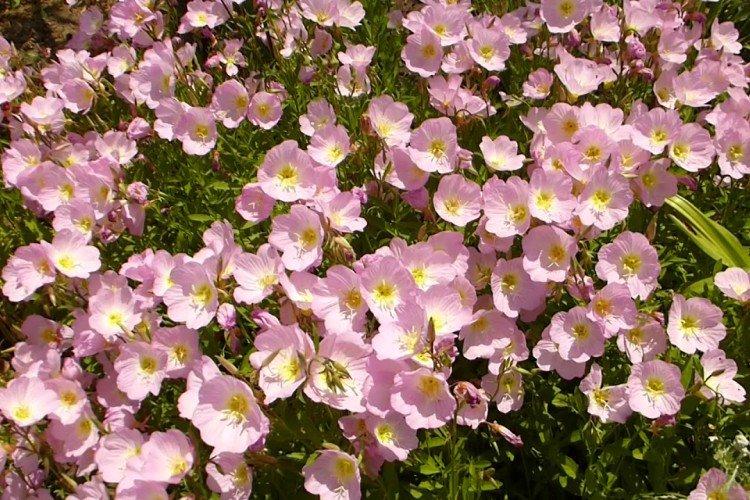
Wintering
Before winter begins, cut the entire ground part of the evening primrose directly to the ground.After that, mulch the area thicker with peat, sawdust or leaves. In regions with frosty winters, you can carefully dig out the rhizome and send it indoors until spring.
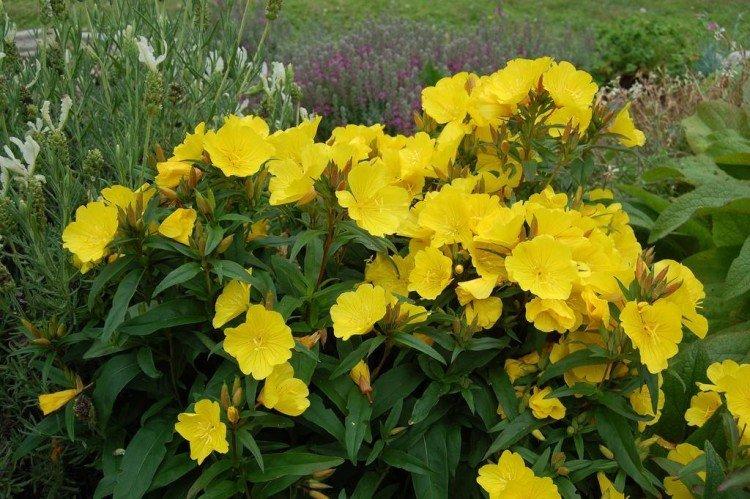
Planting and breeding evening primrose
Evening primrose seeds are germinated in a container because they are too small and are simply more convenient. Cover them up to a depth of about 5 mm and constantly spray the soil, but do not allow stagnant water - and after 2 weeks shoots will appear. In early May, they can be transplanted into the garden.
Evening primrose can be planted directly into the ground, mixing seeds with sand. But then it will bloom only next year, because you cannot sow it before the frost has finally passed.
In spring and autumn, the taller bushes can be divided. To do this, you do not need to dig it out completely, but just carefully cut off the part and deposit only it. And if you do not remove the faded buds in time, then evening primrose reproduces by self-seeding.
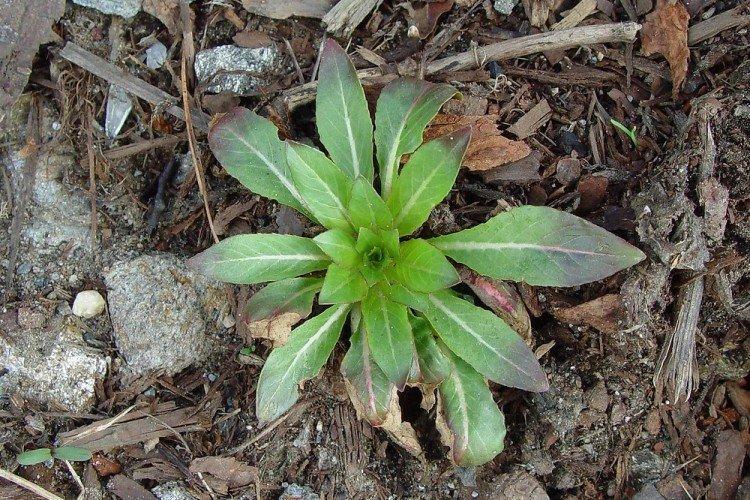
Pest and disease control
Enotera is not only resistant to drought and poor soil, but also to disease. Very rarely, due to improper care, a fungus appears, but it is easy to deal with it with the help of fungicides. Sometimes evening primrose leaves are eaten by hawk moth caterpillars. If there are few of them, it is easier to collect them by hand, but if there are many, use insecticides.
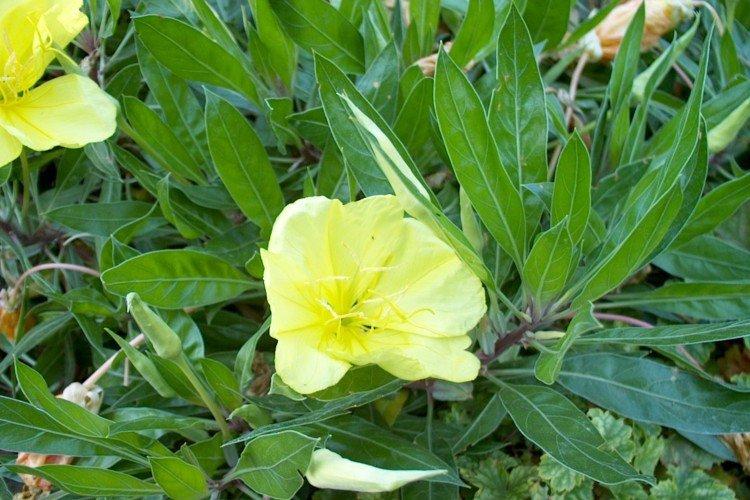
Enotera - photo
Enotera is perfect for landscaping large areas and filling entire flower beds. Just look!


